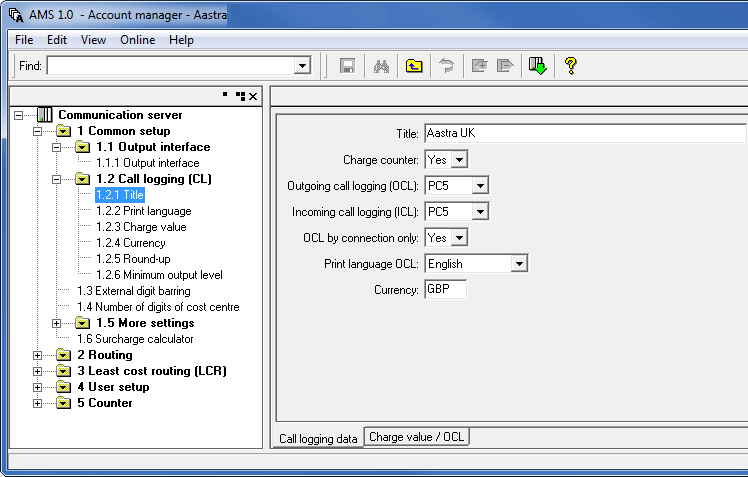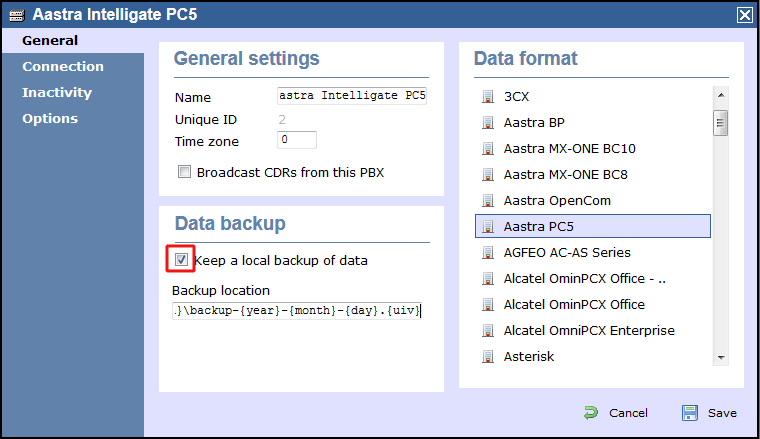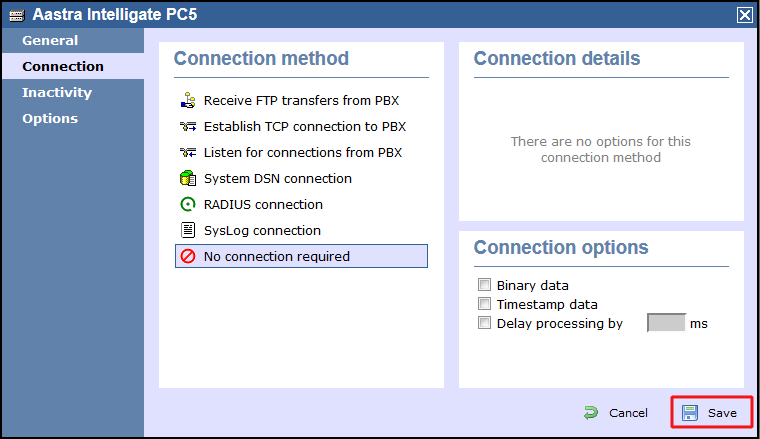These instructions help you configure your Aastra Intelligate phone system to work with TIM Enterprise. Contact your system maintainer if you are not familiar with the configuration of your PBX.
Connection Type
Support Files
Required Tasks
Configuring the SMDR output
The Mitel MiVoice Office 470/Aastra Intelligate Series can output SMDR information in multiple formats. You should always select the PC5 format for use with TIM Enterprise. |
The screenshots below display how the Aastra Intelligate Series should be configured:
Setting the SMDR format to PC5

Setting the SMDR format to TCP/IP

OIP Server and TIM Enterprise
The OIP Server has a very basic call logging module. If you intend to install TIM Enterprise alongside the OIP Server, you need to uninstall the call logging module from the OIP Server suite, otherwise, when configuring your Aastra to output the data to the PC running TIM Enterprise, the OIP Server will overwrite some of the required settings.
Installing NetPBX
If your Mitel MiVoice Office 470/Aastra Intelligate has been configured to send SMDR data via a serial connection, you first need to install the NetPBX software to collect the data from the serial port and send it to TIM Enterprise. For setup instructions, click on the link below:
Configuring TIM Enterprise
Once NetPBX is configured and collecting data, log in to TIM Enterprise and perform the following steps:
- Click on the tab.
- Locate the PBX object you want to configure in the Directory, right-click on it and select Properties.
- A new window will open, displaying the general properties of your PBX object. Select Aastra PC5 from the Data format list and tick the Keep a local backup of data box, as shown below:

- Click on the tab and select No connection required from the Connection method list.
- Click on the button to apply the settings
